Too much of what comes from the antinuclear movement has been negative. Instead, to persuade the entire nation, the movement must unite with other environmentalists to agree that nuclear power is as much an existential threat to humankind as climate change. It also needs to make a positive case. It needs collectively to inform people that there are alternative sources of energy and it is not simply a matter of choosing between carbon and plutonium.
Every scientist can be a spokesperson. The world has to count on people with knowledge not just to write doctoral papers but to speak out and to speak to the layperson—to talk about aspects of nuclear power that the average American can relate to. The average American does not think a power plant that has operated for twenty-five years without accident will suddenly become a killer. What does impress people is telling them in plain English that there is thirty years’ worth of spent fuel, or radioactive trash, piled up in their backyards that no one knows where to store safely. The trash sits in a swimming pool, which if it loses water will cause a fire that is the equivalent of a bomb in power and scale. The strongest argument for shutting down nuclear reactors is that it is immoral to produce more radioactive trash if no one knows what to do with it other than to hand the problem down to future generations—to sweep the dirt under the carpet. Moreover, no one has ever talked about the cost of monitoring this trash in the future.
Nonetheless, I am an optimist. Solar and wind energy are now more cost-effective, and many states require that they be implemented. While it is necessary to talk about radioactive trash and that every nuclear power plant raises electricity rates, the antinuclear movement must also spend some of its energy advocating solar energy. Then maybe we can win.
20
The Nuclear Age and Future Generations
Helen Caldicott
In 2007, Arjun Makhijani published a remarkable study called Carbon-Free and Nuclear-Free: A Roadmap for U.S. Energy Policy . Originating from a symposium I had organized and a presentation given there by David Freeman, it showed that America could indeed be both carbon- and nuclear-free by 2050 by converting to alternative sources of energy. Solar panels could be installed on all houses as they have been in much of Germany, and, with enough wind west of the Mississippi to supply three times the energy America needs, windmills could be installed across the country. Yet, with a pathetic Congress in Washington and a president captive to corporations in the White House, nothing less than a revolution can realize this vision in the next fifty years.
When I first came to the United States in 1978, almost every American I spoke to said it was better to be dead than red. In other words, they would rather have had a nuclear war than be Communist. Against this backdrop of mass psychosis, Physicians for Social Responsibility and I recruited 23,000 doctors in 153 chapters and trained them to engage with the media, which was soon deluged with information. The media’s reaction was to question why doctors should be involved in what was essentially a political issue, not a medical issue. Our response was that it was a medical issue because nuclear war would destroy the human race.
We continued to organize symposia across the nation, which garnered further attention. People began to listen. The archbishop of Boston became concerned, having woken up one morning, seen a map in the Boston Globe showing what might happen in the event of nuclear attack (everyone vaporized in a five-mile radius; third-degree burns out to twenty miles; three thousand square miles in flames), and said, “I don’t think Jesus would like this.” Celebrities such as Lily Tomlin and Sally Field joined us, too—a boon as far as the media was concerned, because who wants to watch an Australian doctor in a tweed suit talking about the medical effects of nuclear war?
After five years, 80 percent of Americans were opposed to nuclear war, including Ronald Reagan. I remember coming out from a long meeting with the president, in which I felt I had not persuaded him, only to later hear him say that nuclear war must never be fought and can never be won. He then started working with Mikhail Gorbachev, who himself had seen doctors on television talking about the medical consequences of nuclear war. I remember, too, asking House Speaker Tip O’Neill to play our film The Last Epidemic on every monitor in Congress, and he did. He later said that supporting the nuclear weapons freeze was one of the most important moments of his career.
We organized a demonstration in Central Park, which turned out to be one of the largest demonstrations in American history. More than a million attended, including black lesbians from Harlem, Southern Christian Baptists, and Mormons from Salt Lake City. Reagan may have returned to talking about Star Wars and missile defense in America’s interests but by then almost the entire population of America supported an end to nuclear weapons. We had created a revolution—a peaceful revolution that contributed to the end of the Cold War.
It was education that did the trick. As Thomas Jefferson said, “An informed democracy will behave in a responsible fashion.” But the younger generations who now spend all their time tweeting and texting on their cell phones are not informed; they do not understand what they will inherit from the nuclear age, and that troubles me. Not only is there the possibility of future nuclear accidents, they will inherit massive quantities of radioactive waste, which no one knows where to store. This waste will leak, contaminating food and water, and ultimately induce epidemics of cancer and irreparable damage to our genes. Imagine our descendants waking up to radioactive food, to radioactive breast milk, to babies deformed because they were exposed to radiation in utero, to children diagnosed with cancer at the age of six. Meanwhile, the nuclear industry is only concerned with building further power plants; they are arrogant enough not to show any interest in cleaning up after themselves or in the harm that radioactive waste will cause in the future.
This harm encompasses genetic mutations, almost all of which cause disease and are found in recessive genes (most mutations in dominant genes are lethal). The problem is, as Hermann Joseph Muller’s Nobel Prize–winning experiments on drosophila fruit flies have shown, it can take twenty generations for mutations to manifest themselves as diabetes or cystic fibrosis or any of the six thousand diseases now known to be genetically inherited. From a medical perspective, therefore, it is absurd to conclude that because there have been no signs of genetic abnormalities directly caused by the nuclear bombs of Hiroshima and Nagasaki, the survivors have not suffered any damage to their genes.
The Japanese government has proposed allowing doses as high as two rems per year to schoolchildren, claiming the risk is low. An exposure at this level over five years—a total of ten rems—for a girl starting at age five would create a cancer incidence of around 3 percent, according to risk estimates in the BEIR VII report. Around three out of every one hundred girls—for boys the risk is lower—would develop cancer, and in one of those three, the cancer could be attributed to radiation exposure. The terrible impact, however, is greater than this. Imagine the fear and the guilt parents would feel knowing that their child might develop cancer as a result of such exposure, especially given the long latency period of most cancers. The Pentagon understood this when it evaluated the extent of contamination produced by the July 1946 underground nuclear bomb test at Bikini Atoll. Their report read:
Читать дальше
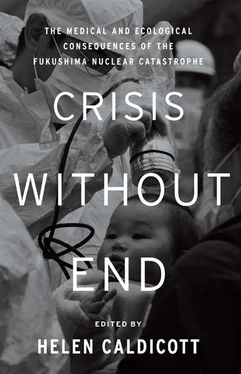
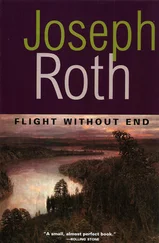
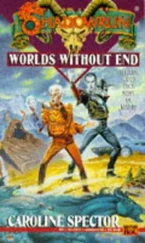

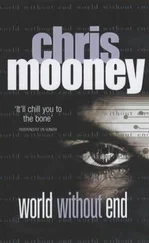

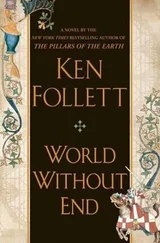
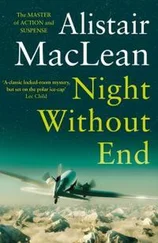
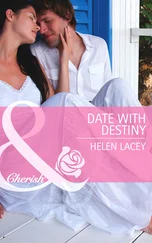
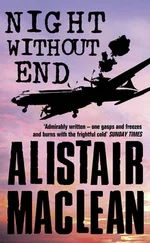
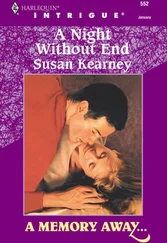

![Helen Rowland - The Widow [To Say Nothing of the Man]](/books/752764/helen-rowland-the-widow-to-say-nothing-of-the-man-thumb.webp)